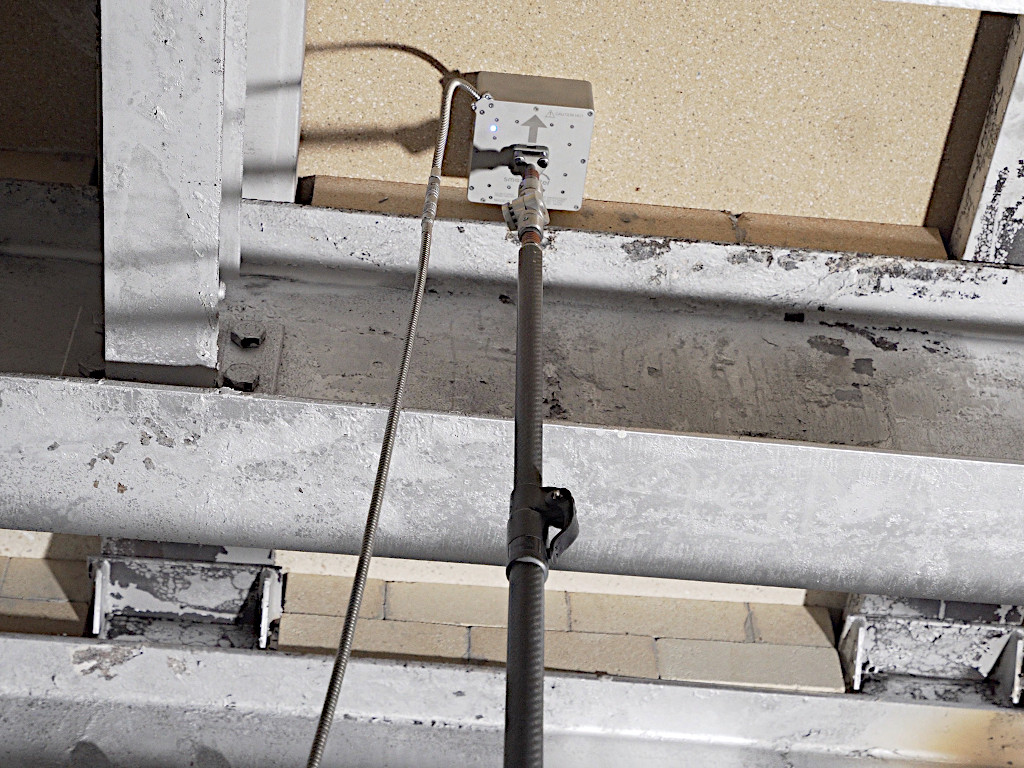SmartMelter radar inspections have become a regular part of furnace monitoring for many glass manufacturers. PaneraTech’s portable sensors have been utilised by 200 plants since 2017, and the company’s technology has been recommended as a standard practice by FM Global and other insurers since 2020. Regular radar inspections help manufacturers to make data-driven decisions about furnace maintenance and repair by reporting the exact areas of glass penetration and the residual thickness of refractory block.
While SmartMelter provides a full scan of the furnace melter, it does require human labour to place the sensors on each area of the refractory that is measured. PaneraTech’s equipment is lightweight and easy to operate, but that does not change the physical limitations of the human body. There have always been a few small areas that have been difficult for the equipment operator to access, especially on furnace throats. In addition to access issues, manufacturers have expressed an interest in receiving more frequent data for areas that are known to wear quickly. Sometimes these two problems overlap. This can result in a high-wear area being ‘skipped’ on inspection.
Introducing Polaris
These are just two of the issues that are solved by Polaris, PaneraTech’s new continuous monitoring sensor. Polaris is a permanent IoT [Internet of Things] sensor that can be installed during furnace construction or later during operations when an area of concern is discovered. While SmartMelter provides a comprehensive inspection at one point in time, Polaris provides continuous data from a specific area. Polaris has been tested for five years on furnace throats. These sensors can be removed to apply overcoat, and then reapplied when the maintenance is complete. They can be moved from one area to a more critical area when a concern is identified.
How do these solutions work together?
A manufacturer might choose specific areas of the furnace to be monitored by Polaris throughout the campaign, including those they identify as hard-to-access. These sensors would be installed on the refractory during construction. A SmartMelter radar scan at heat-up will establish baseline data for the entire melter and ensure that there were no issues during heat-up. Annual SmartMelter scans will help the manufacturer determine the rate of wear and adjust operations to maximise campaign life. When glass is detected, Polaris sensors can be placed at critical areas for regular monitoring. Together, SmartMelter gives a full report of the melter condition once per year and Polaris delivers real-time data on the areas of highest concern. Polaris provides the regular ‘heart rate’ of the furnace, letting the manufacturer know how well the furnace is surviving current operating conditions. For example, this information could alert the plant team about the need to accelerate maintenance plans. The end result is an optimised furnace campaign with no unexpected interruptions to production.
Ideal for electric furnaces
Polaris is the ideal solution for the growing number of electric furnaces. Existing refractory assessment techniques all require an electric furnace to be de-energised. Loss of production time can make these assessments costly. Polaris allows electric furnaces to be monitored continuously without shutting down production.
Polaris also helps SmartMelter to accommodate electric boosting. PaneraTech’s portable sensors can be used on electrode blocks, but a careful plan is made to turn off boosting for short periods of time so that the operator can collect data safely. Because Polaris does not require human labour, electrode blocks and areas within boosting cages are perfect locations for IoT sensors.
Additional capabilities
Polaris can collect data on hotter temperatures than PaneraTech’s portable sensors. Currently, SmartMelter sensors require a surface temperature of 500°C while Polaris sensors can operate indefinitely up to 1,000°C.
SmartMelter sensors currently identify issues up to two years before there are visual or thermal indications. However, many customers have asked us for a sensor with a deeper range for specific areas. Continuous monitoring means that we are collecting more data in shorter periods of time. For example, it took almost five years for SmartMelter to collect one million measurements from furnaces. A single Polaris sensor can collect the same amount of data in two months. As we analyse this data, there is a great possibility that we will be able to not only see deeper into the refractory, but also into a greater variety of materials.
Best solution for an immediate inspection?
If your furnace is not currently monitored by one of our products and you have an immediate need, then SmartMelter is the most responsive solution. A SmartMelter inspection can be set up within weeks, sometimes faster depending on equipment availability. Once the refractory condition is assessed, this information can be used to determine the best placement of IoT sensors.
Our furnace experts can work with you to design a plan for the best combination of assessment by portable and IoT sensors. Using what we have learned from one million refractory measurements, we can help you get the most life out of your furnace without an unexpected halt to production.
SmartMelter is a registered trademark of PaneraTech, Inc.
Image: SmartMelter portable sensor collecting data on a furnace bottom.


